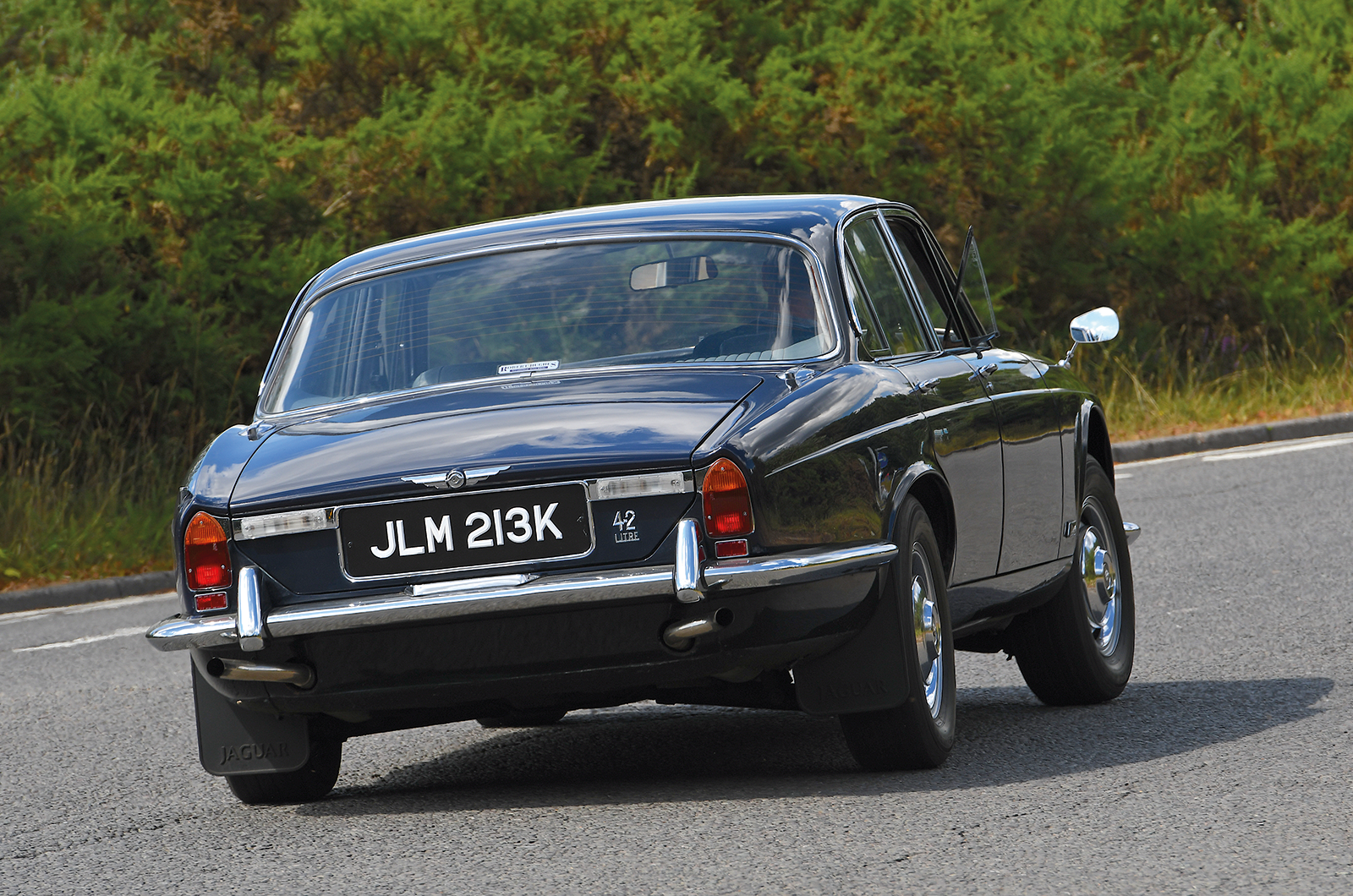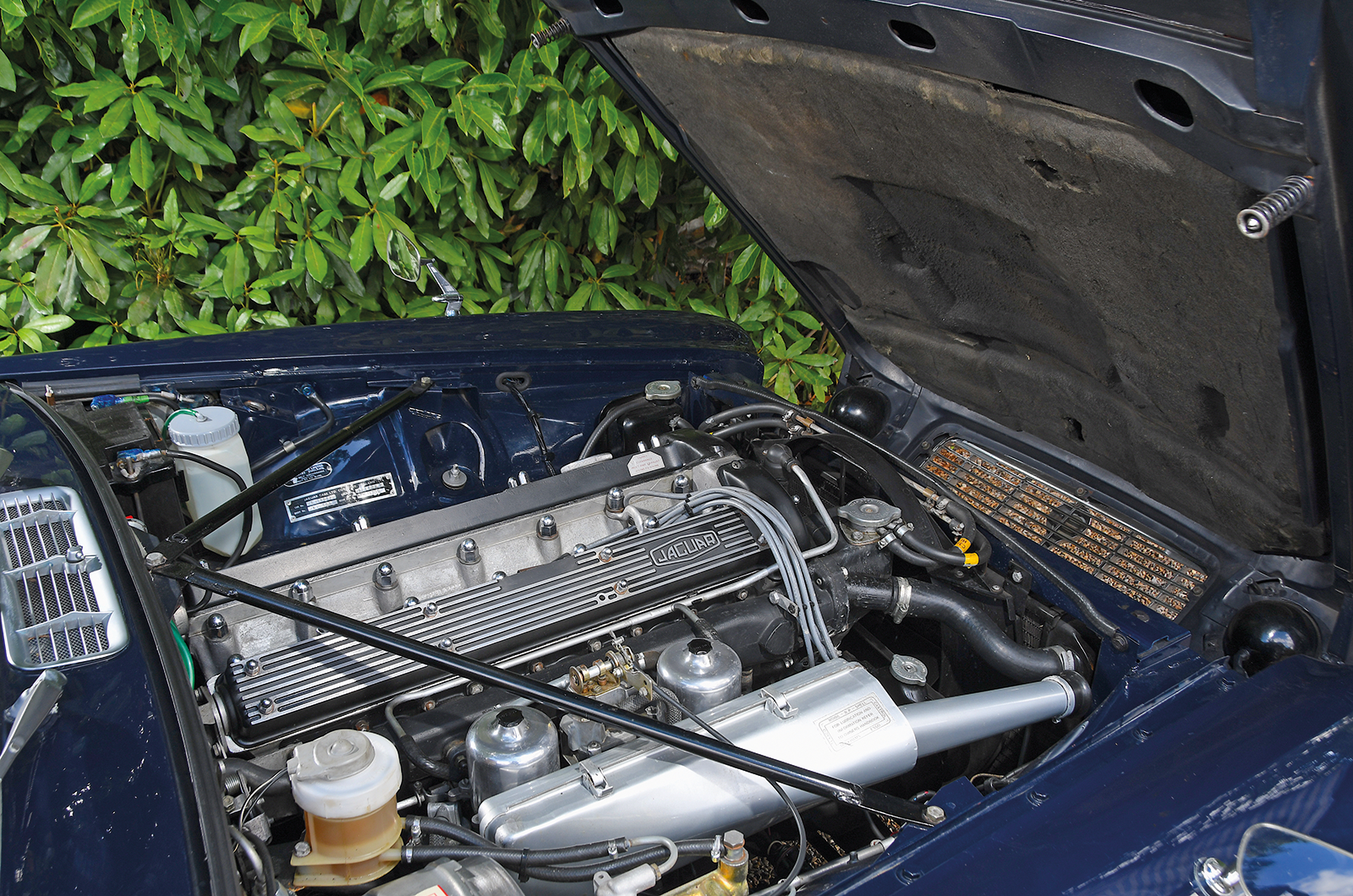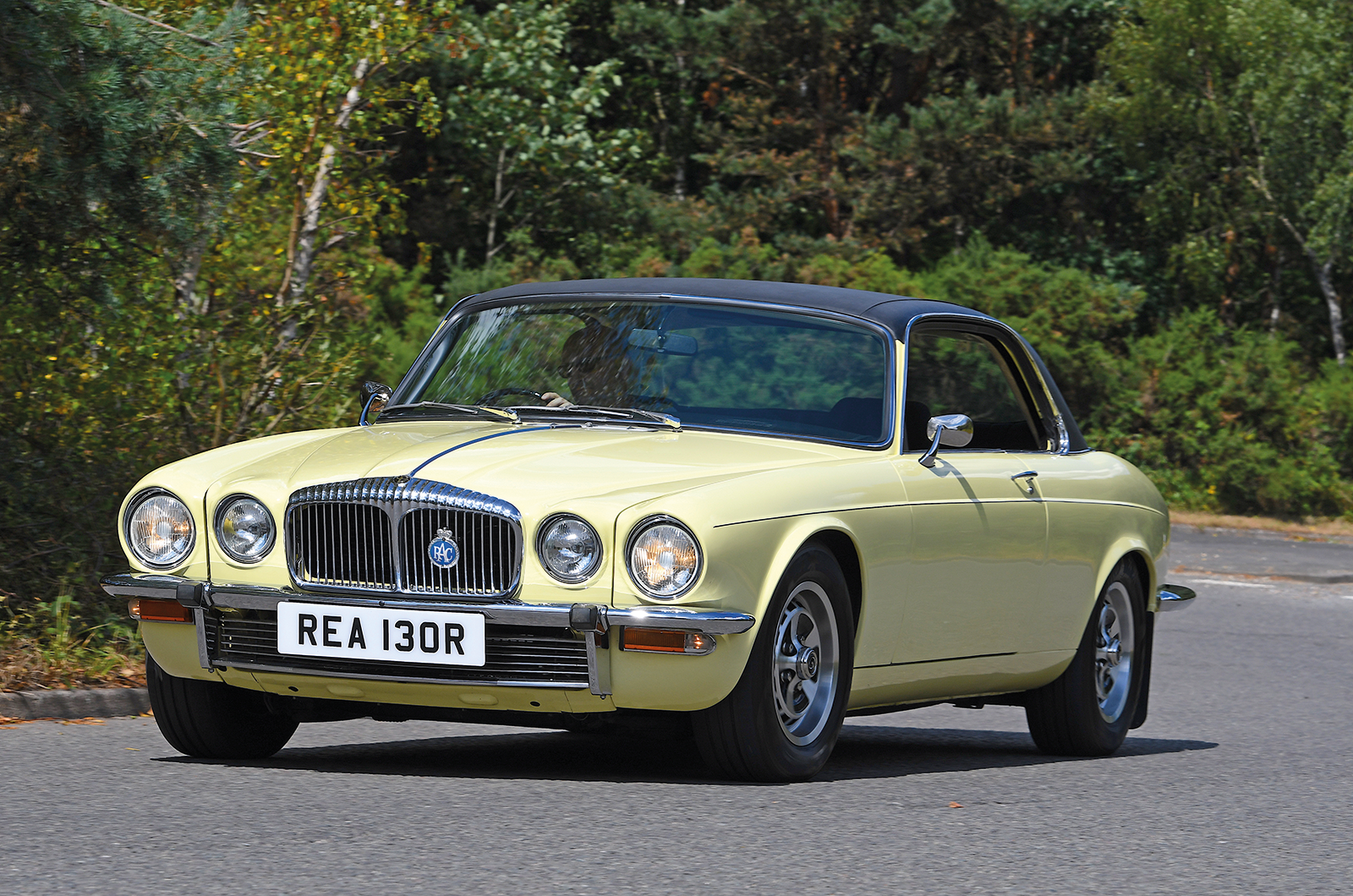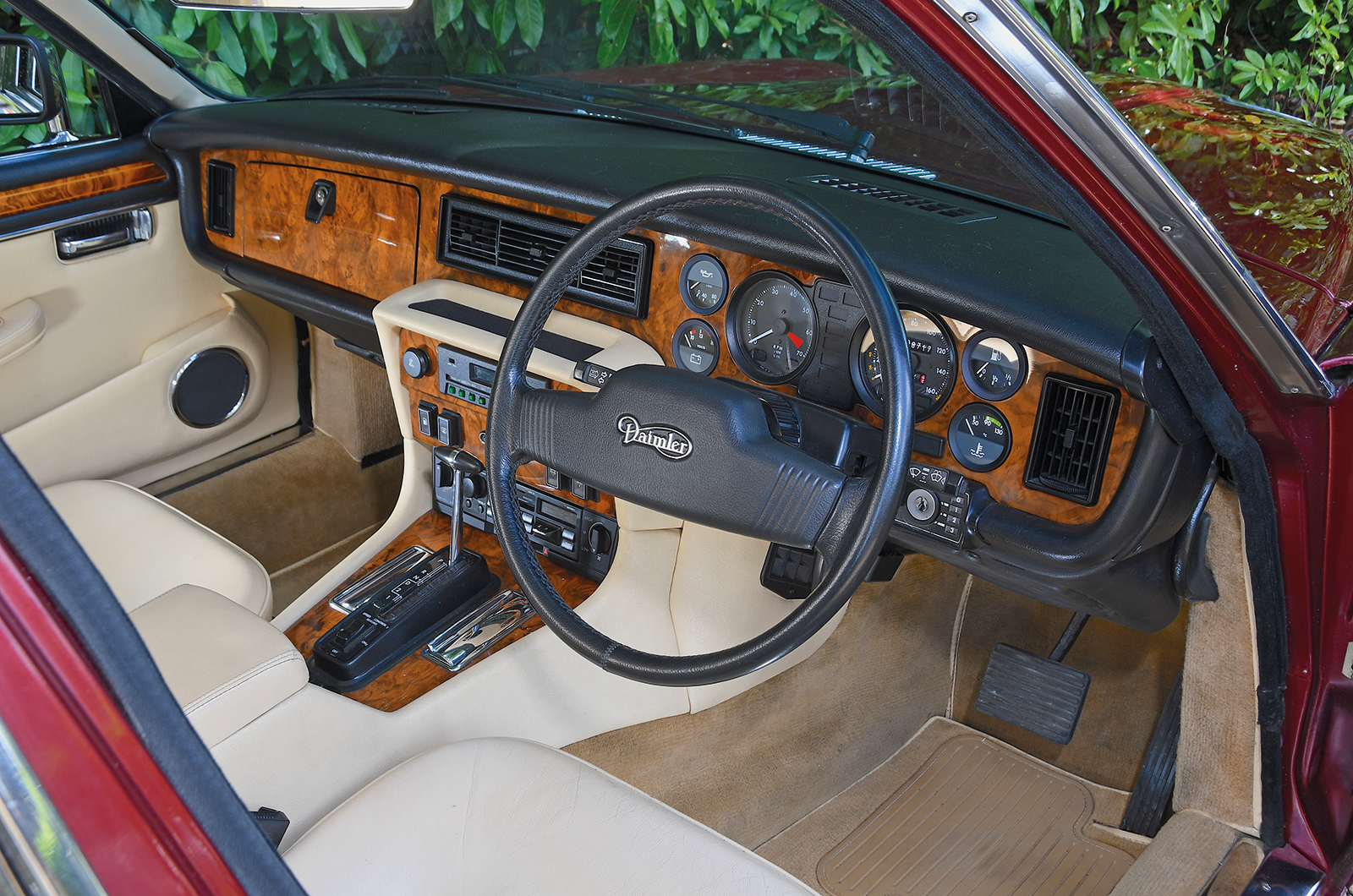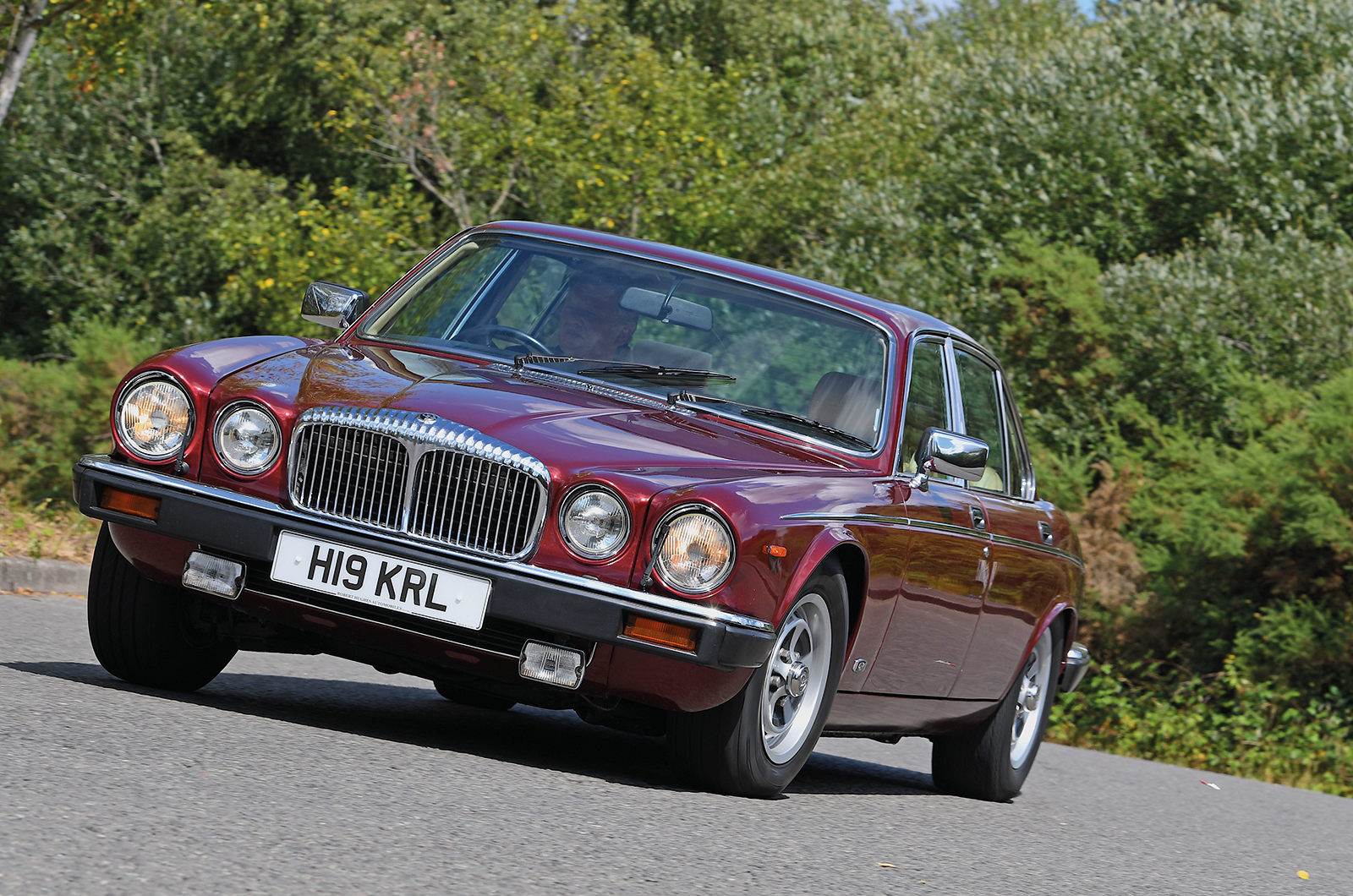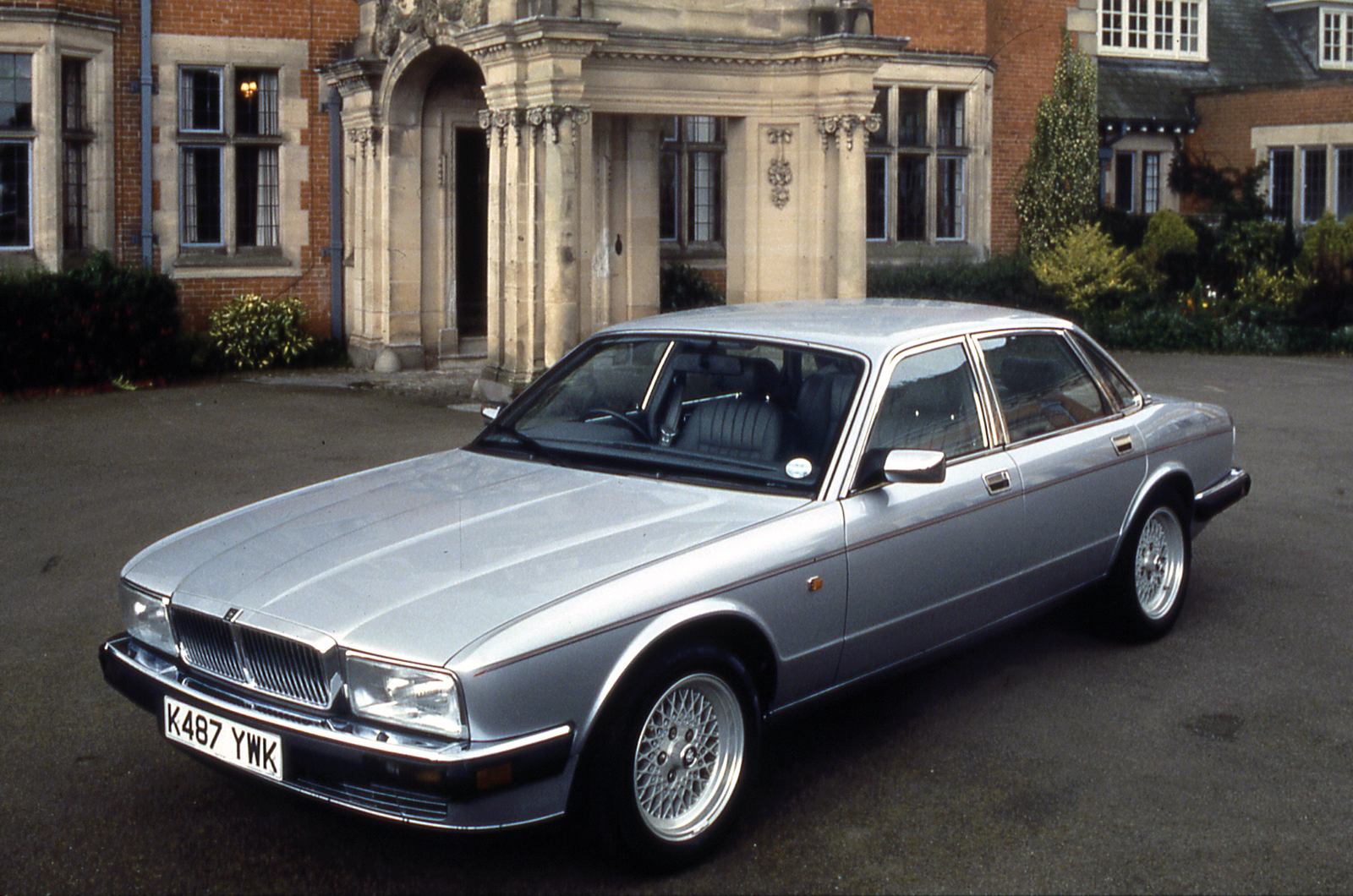Introduced in March ’79, the Series III cars were an unintended holding operation while the XJ40 was being developed. No doubt missing the input of Lyons (he retired in 1972), Jaguar turned to Pininfarina for styling tweaks that included a taller, more crisp roof and glass area, injection-moulded bumpers and flush-fitting doorhandles.
The Series II dash architecture largely remained – hardly the latest in ergonomics, but ‘traditional’. A variety of brittle plastic details are less welcome, the trip computer on this late Double-Six being particularly grating, but this is understandable when you consider the value for money the cars represented.
You still have to swap between the 11-gallon pannier tanks in the rear wings, using a switch on the dashboard, but the HE (High Efficiency) V12s, featuring Michael May’s swirl-action combustion chambers, made 20mpg a realistic possibility for the first time.
In Series III Double-Six Daimler form it is still the most silky car imaginable to drive. From the outside, the engine makes itself apparent more by the whirring of fans and drivebelts than any true mechanical sound. From within the cocoon-like cabin, cooled by deliciously efficient air-conditioning, the V12 feels more like an electric motor than a reciprocating unit.
The car covers ground with an ethereal rush of energy that perfectly complements its superb chassis refinement; even by the early ’80s it was more than a match for its fresh-faced German rivals, which were still on the drawing boards in Munich and Stuttgart when the original XJ was five years into its production run.
“A masterful fusion of tradition and modernity that no subsequent Jaguar saloon has ever recaptured”
The end for the Series III V12s finally came in 1992, five years after the last of the ‘sixes’. Those were too heavy and too expensive to build compared to new XJ40s, which were nimbler and supposedly better-quality vehicles. Reluctant as many were to point it out at the time, though, these were nothing like as pretty as their predecessors – even if they were traditionally Jaguar in layout and feel.
Through the 1970s and ’80s the XJ became such a routine sight on British roads that we tended to forget how superlatively good they were – and still are. They are truly great machines, even when you remove your rose-tinted spectacles and waft away the fog of nostalgia that tends to surround anything with a Jaguar badge on it.
In a funny way, these cars seem almost better now, at 50, than they did 20 years ago (when we first considered them truly ‘classic’), possessed of a lithe and compact curvaceousness that is in startling contrast to the obesity of 21st-century luxury saloons.
Like every Jaguar four-door before it, the 1968 XJ6 was fast and refined beyond its price-tag, yet offered a modern interpretation of saloon-car elegance that would have floored the opposition even if the engineering underneath had not been so accomplished.
It was a brilliant parting gift from Sir William Lyons to the company he created, the final car designed under his autocratic but wise leadership. It is widely acknowledged as his masterpiece in a career of superb cars.
Images: John Bradshaw; thanks to Satiris Shangolis (SII) and Robert Hughes (SI and SIII)
Anorak’s guide
SERIES I 2.8/4.2 & V12 (1968-’73)
59,077 built in 4.2 form, plus 874 LWB cars. No ‘Jaguar’ badges anywhere on the car at first, such was Lyons’ confidence in the public’s recognition of the shape. £2254 for non-overdrive car, £1897 for the 2.8 De Luxe; supposed ‘standard’ 2.8 with Ambla seats, manual steering and no rear armrest was never built. Auto-only XJ12s from 1972 were £3726 (the simpler grille had vertical bars only) and had four Zenith carbs plus a manual choke, giving 146mph and 11mpg. Mercedes engineers admitted that this V12 was “the best production engine in the world”.
SERIES II 2.8/3.4/4.2/5.3 (1973-’79)
The long-wheelbase 4.2 was far and away the most popular, at 57,804 cars out of a total of 127,000 SIIs (all engines and bodies). Short- and long-wheelbase versions at first, after which the SWB was reserved for the XJC coupés with 4in-longer doors. All four-door V12s were LWB, but still on carbs until the 285bhp/147mph injected 1975 car, badged XJ 5.3. ‘Blazer button’ steel wheels with hubcaps or GKN alloys on SII. Greatest oddity of the SII was the 170 exportonly 2.8s, but the 1975 3.4, with cloth seats and other luxury items deleted, is much preferred.
SERIES III 3.4/4.2/5.3 (1979-’92)
Injection for the 4.2 (the 3.4 stayed on SUs), and a limited range of solid colours on early cars from the troubled new Castle Bromwich body plant. Later improvements meant that with the final update for ‘sixes’ in 1985, Jaguar came fifth in that year’s JD Power customer satisfaction survey with the standard XJ6 (tweed trim) and Sovereign (leather trim) that bowed out in April 1987. Rare five-speed manual from the Rover SD1 later replaced four-speed, but most XK ‘sixes’ have Borg-Warner auto; the GM400 was later mandatory with the V12, which became the HE in 1981, boosting economy to 20mpg.
DAIMLER SOVEREIGN & VDP (1969-’92)
Today the Daimler marque is dormant, but it was important to the XJ line-up until the early ’90s, for customers who thought Jaguar ownership a trifle racy. The first XJ-based 2.8/4.2 Sovereigns of ’69 featured overdrive, updated trim and a heated rear window. The V12 Daimlers, named Double-Six, were first to get the long-wheelbase shell with the option of Vanden Plas trim. There were Sovereign and Double-Six versions of the coupés, the latter very rare at 407 examples.
Life after the SIII
XJ40 (top), XJ8 (bottom left) and X350 kept the line going
XJ40 (1986-’94)
‘XJ40’ was the internal code for the Series III replacement. It was better built, easier to service and cheaper to run. Later cars are the best, but aren’t immune to rust. They were all AJ6 ‘sixes’ at first – including the single-cam 2.9 – with the 6-litre V12 offered for the final year. Today, interest is quietly growing in these cars.
X300 & X308 (1994-2003)
A better-looking successor using 3.2- or 4-litre twin-cam ‘sixes’, voted ‘most beautiful car in the world’ by a panel of Italian style gurus. The XJR was the first to use Eaton’s M90 supercharger, meaning 0-60mph in 5.5 secs. For the 1997 XJ8 (X308), V8s replaced ‘sixes’ and V12s. The XJR 4-litre was then the most powerful Jaguar roadcar engine, boasting a supercharged 370bhp – with a rare Daimler variant called the Super V8.
X350 & X358 (2003-’09)
This laid to rest the XJ40 geneology with an allnew aluminium monocoque, bonded rather than welded for huge weight savings and gains in strength. There were petrol V6s and V8s, plus a diesel V6. The supercharged V8s give the most thrills, but complex technology and electronics don’t auger well for today’s enthusiast owners. The 2007-on facelifted X358 attempted to answer critics of the car’s ‘golf-club’ styling.
X351 (2009-DATE)
The current, Ian Callum-styled flagship is based on the previous model and is one of the lightest cars in its class. Standard- and long-wheelbase versions plus lavish specs maintain the XJ’s reputation for refinement and value. There are V6s and V8s, while the 2013-on XJR is a 542bhp rocketship. Special versions include an armoured variant, as used by the British PM.
READ MORE
Everyone wants a Jaguar E-type, but which one is best
Buyer’s guide: Jaguar E-type Series 3
Drive a D-type at Jaguar Classic's new Tour & track day
Martin Buckley
Senior Contributor, Classic & Sports Car

